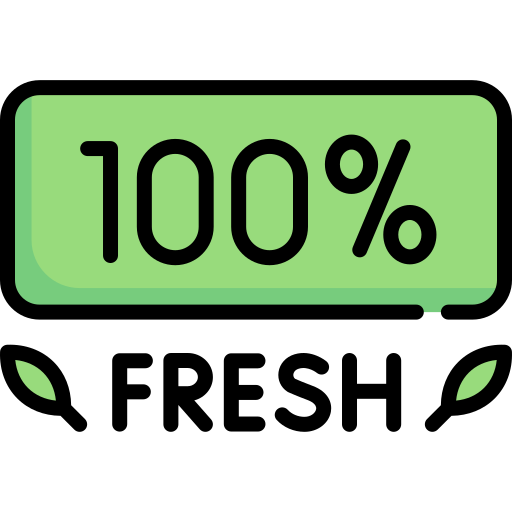This article may contain references to products or services from one or more of our advertisers or partners. We may receive compensation when you click on links to those products or services. Nonetheless, our opinions are our own.

Updated by Albert Fang
- Key Highlights
- Introduction
- Understanding Loans on a Fully Paid House
- What It Means to Own Your House Outright
- The Basics of Home Equity for Homeowners
- Preparing for a Loan: What You Need to Know
- Beginner’s Guide to Loans on an Outrightly Owned House
- Step-by-Step Guide to Getting a Loan
- Types of Loans Available for Outright Homeowners
- Risks and Considerations When Borrowing Against Your Home
- Conclusion
- Frequently Asked Questions
- Recommended Reads
Key Highlights
- If you own your home outright, you can leverage its value to secure a loan.
- Several loan options are available to meet various financial needs.
- A strong credit score and stable financial situation improve loan approval chances.
- Understanding loan types, interest rates, and repayment terms is crucial.
- Borrowing responsibly ensures you manage repayment effectively.
Introduction
Congratulations on fully owning your home! This is a significant financial milestone that opens opportunities in the real estate market. If you need funds for home improvements, debt consolidation, or investments, your home’s equity can be a valuable resource. Understanding your loan options will help you make informed financial decisions that align with your current and future goals.
Understanding Loans on a Fully Paid House
Even if you have paid off your mortgage, you can still borrow money using your home as collateral. Your home equity represents the value you own outright and serves as security for the loan. Because you own your home, lenders may view you as a lower-risk borrower, potentially offering better loan terms.
However, borrowing against your home requires careful financial planning. Before applying for a loan, assess your finances and ensure you can comfortably manage the repayment terms.
What It Means to Own Your House Outright
Owning your home outright means you have no mortgage, giving you full home equity. This can increase your borrowing potential. However, lenders typically allow you to borrow only a portion of your home’s value—usually 80-85% of its market worth—to minimize risk.
For example, if your home is worth $400,000 and you have no mortgage, your equity is the full $400,000. However, most lenders will let you borrow up to $320,000 (80% of the home value). Understanding these limits helps set realistic borrowing expectations.
The Basics of Home Equity for Homeowners
Home equity is the portion of your home that you truly own. It increases when you pay down your mortgage or when your home’s market value rises. Homeowners often use their equity for home renovations, debt consolidation, education expenses, or purchasing additional properties.
Since your home serves as collateral, failure to repay your loan could lead to foreclosure. Therefore, it is essential to evaluate your financial situation and borrowing capacity before using home equity.
Preparing for a Loan: What You Need to Know
Proper preparation increases your chances of loan approval and securing favorable terms. Start by understanding your financial health and aligning your borrowing goals accordingly.
Assessing Your Financial Health
Your credit score plays a crucial role in loan approval. A score of 700 or higher improves your chances of obtaining better interest rates and loan terms. Additionally, review your monthly income and expenses to determine how much you can comfortably afford for loan repayments.
If you need personalized assistance, consider consulting a financial advisor. They can help analyze your financial standing, explore loan options, and develop strategies aligned with your long-term financial goals.
Evaluating Your Loan Needs and Objectives
Different loans cater to different financial needs. Common options include home equity loans, home equity lines of credit (HELOCs), and cash-out refinancing. Understanding these choices will help you select the best one for your situation.
Additionally, consider the repayment period. A shorter loan term results in higher monthly payments but lower overall interest costs. A longer term reduces monthly payments but may lead to paying more interest over time. Clarifying your financial goals will help you choose a loan type and repayment strategy that best suit your needs.
Beginner’s Guide to Loans on an Outrightly Owned House
Owning your home simplifies the loan approval process, but navigating the various loan types and lenders can still be challenging. This guide will help you understand how to leverage your home equity safely and effectively.
Identifying Your Reasons for Taking Out a Loan
Before borrowing, clarify your purpose. Common reasons include:
- Debt consolidation: Combining multiple high-interest debts into one loan with a lower interest rate can simplify repayment and reduce costs.
- Home renovations: Investing in improvements can increase property value and enhance your living space.
- Investment opportunities: Using home equity for investments may yield financial growth, but it comes with risks.
Ensure that your reason for borrowing aligns with a sound financial strategy to avoid unnecessary debt and utilize a loan repayment calculator.
Resources and Documentation Needed for Loan Approval
Lenders require specific documents to assess your financial stability and repayment ability. Commonly requested documents include:
- Proof of income (pay stubs, tax returns, bank statements)
- Debt information (credit card statements, loan agreements)
- Property documentation (homeownership records, tax bills, insurance details)
Gathering these documents in advance can streamline the loan approval process.
Step-by-Step Guide to Getting a Loan
Step 1: Determine the Right Loan Type
Choose a loan that matches your financial needs:
- Home Equity Loan: Fixed-rate lump sum loan, suitable for large, one-time expenses.
- HELOC: Flexible credit line for ongoing expenses, such as home renovations.
- Cash-Out Refinance: Replaces an existing mortgage with a larger loan, allowing access to home equity.
Step 2: Calculate Your Home Equity
Determine how much equity you have by subtracting any existing mortgage balance from your home’s market value. Most lenders allow borrowing up to 80-85% of your home’s value.
Step 3: Check Your Credit Score
A high credit score improves loan terms. Obtain your credit report from Equifax, Experian, or TransUnion, check for errors, and take steps to improve your score if necessary.
Step 4: Compare Lenders and Loan Offers
Shop around for the best loan terms. Consider:
- Interest rates (fixed vs. variable)
- Loan amounts and closing costs
- Repayment terms and hidden fees
Step 5: Complete Application and Submit Required Documents
Provide accurate financial details in your loan application. Errors or missing information may delay approval or lead to rejection.
Types of Loans Available for Outright Homeowners
Home Equity Loans
A home equity loan provides a fixed interest rate, lump sum, and consistent payments. It is ideal for one-time expenses like major home improvements or debt consolidation.
HELOCs: How They Work
A HELOC functions like a credit card, allowing borrowing up to a limit during a draw period (typically 5-10 years). It usually has a variable interest rate, which can lead to fluctuating payments.
Cash-Out Refinance
This replaces your current mortgage with a new, larger one, allowing access to cash. If interest rates have increased since your original mortgage, this option may result in higher payments.
Risks and Considerations When Borrowing Against Your Home
Potential Pitfalls
- Over-borrowing: Taking out more than you can afford may lead to financial strain.
- Interest rate changes: Variable rates can increase, raising monthly payments.
- Foreclosure risk: Failure to repay a home equity loan or HELOC can result in losing your home.
Mitigating Financial Risks
- Consult a financial advisor to ensure smart borrowing decisions.
- Compare multiple loan offers to find the best terms.
- Maintain an emergency fund to cover unexpected expenses.
Conclusion
Taking out a loan against your fully owned home can be a smart financial move if used responsibly. Whether you choose a home equity loan, HELOC, cash-out refinance, or reverse mortgage, make sure you:
- Understand the loan terms, risks, and repayment obligations.
- Compare lenders to find the best rates and lowest fees.
- Use the funds wisely—whether for home improvements, debt consolidation, or other necessary expenses.
If you’re unsure which loan option is right for you, consult a financial advisor or mortgage specialist to explore the best solution for your needs.
Frequently Asked Questions
Can I get a loan on my fully paid-off house?
Yes, options include home equity loans, HELOCs, second mortgages, and reverse mortgages.
What are the benefits of borrowing against my home?
Lower interest rates, flexible financial options, and potential investment opportunities.
What should I consider before taking out a loan?
Evaluate interest rates, repayment terms, fees, and your long-term financial goals before borrowing.

Reviewed and edited by Albert Fang.
See a typo or want to suggest an edit/revision to the content? Use the contact us form to provide feedback.
At FangWallet, we value editorial integrity and open collaboration in curating quality content for readers to enjoy. Much appreciated for the assist.
Did you like our article and find it insightful? We encourage sharing the article link with family and friends to benefit as well - better yet, sharing on social media. Thank you for the support! 🍉
Article Title: I Own My House Outright—Can I Get a Loan?
https://fangwallet.com/2025/02/13/i-own-my-house-outright-can-i-get-a-loan/The FangWallet Promise
FangWallet is an editorially independent resource - founded on breaking down challenging financial concepts for anyone to understand since 2014. While we adhere to editorial integrity, note that this post may contain references to products from our partners.
The FangWallet promise is always to have your best interest in mind and be transparent and honest about the financial picture.
Become an Insider

Subscribe to get a free daily budget planner printable to help get your money on track!
Make passive money the right way. No spam.
Editorial Disclaimer: The editorial content on this page is not provided by any of the companies mentioned. The opinions expressed here are the author's alone.
The content of this website is for informational purposes only and does not represent investment advice, or an offer or solicitation to buy or sell any security, investment, or product. Investors are encouraged to do their own due diligence, and, if necessary, consult professional advising before making any investment decisions. Investing involves a high degree of risk, and financial losses may occur including the potential loss of principal.
Source Citation References:
+ Inspo
There are no additional citations or references to note for this article at this time.












































